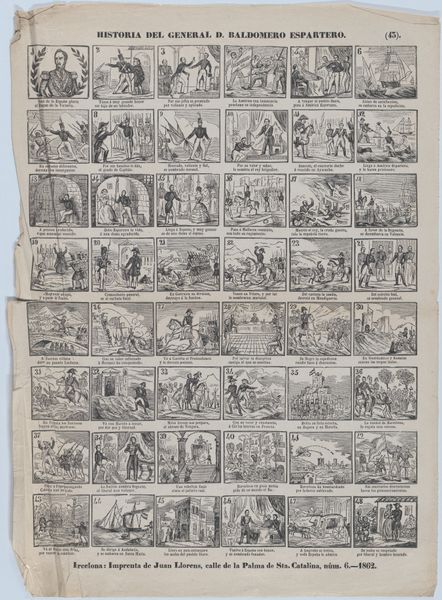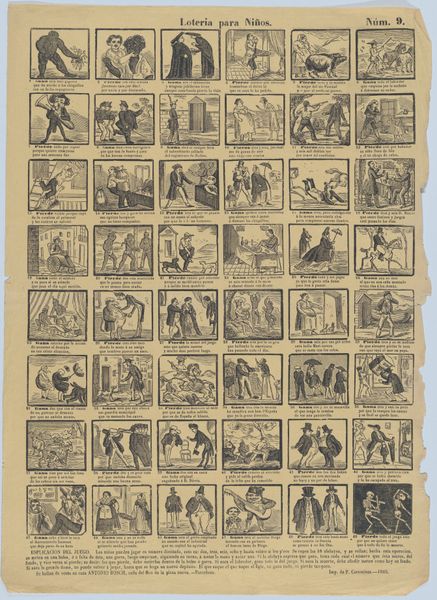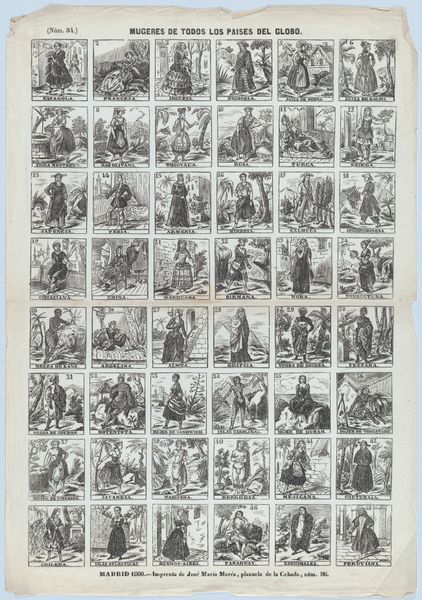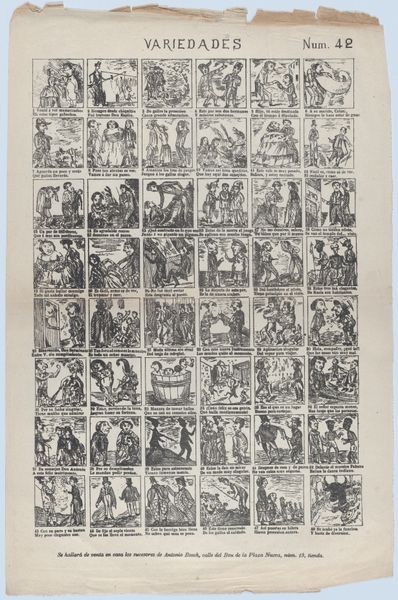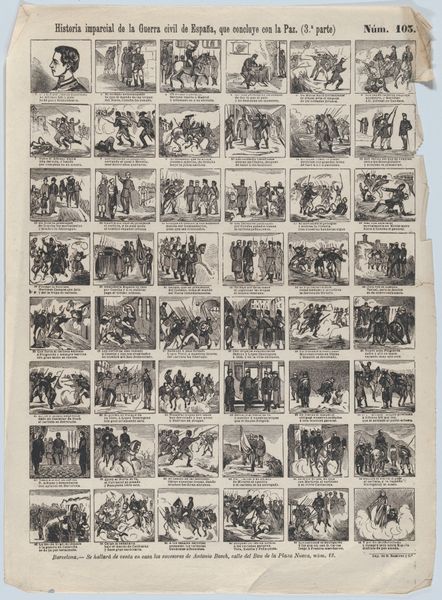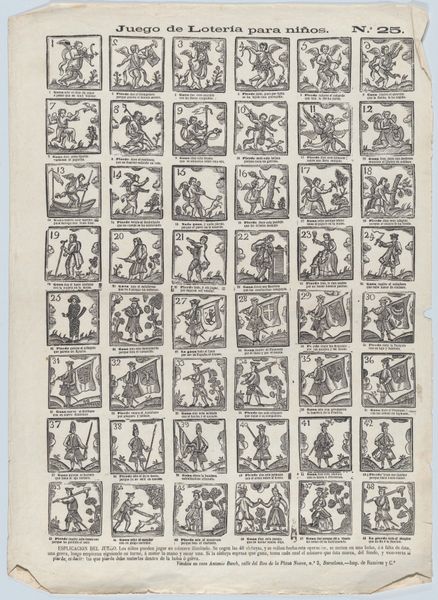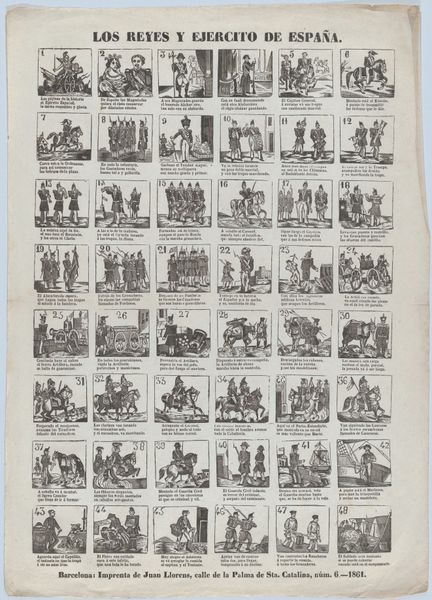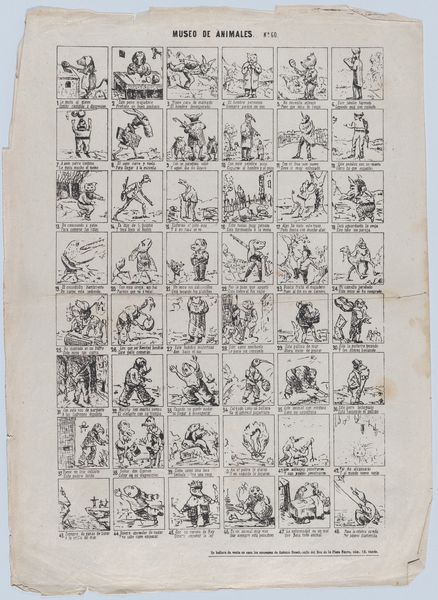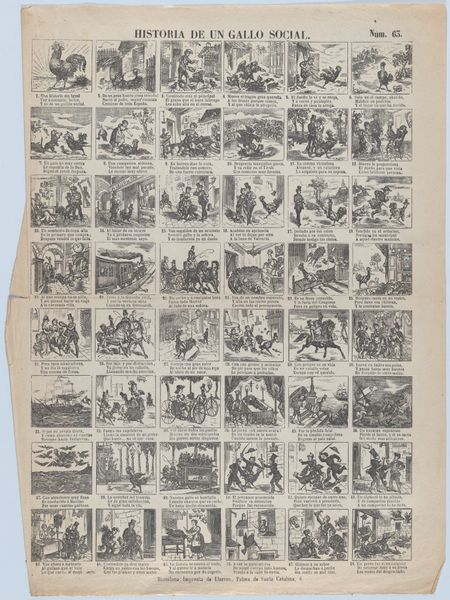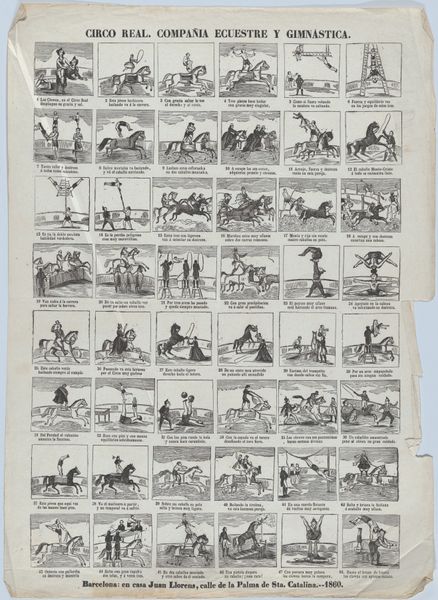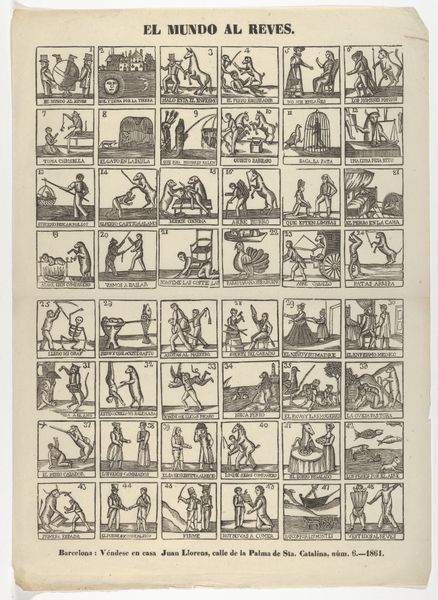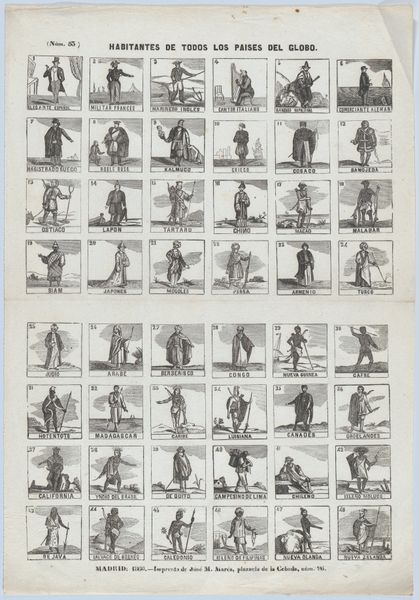
Broadside with 48 scenes depicting the story of the Dwarf Barrabás 1855 - 1875
0:00
0:00
drawing, print
#
drawing
#
narrative-art
# print
#
ukiyo-e
#
comic
#
genre-painting
Dimensions: Sheet: 17 1/2 × 11 1/4 in. (44.5 × 28.5 cm)
Copyright: Public Domain
Curator: At first glance, it reminds me of a medieval tapestry, a whirlwind of activity packed into a neat grid. There’s a compelling narrative structure at play, but without color, it’s a rather austere visual experience. Editor: Indeed. We are looking at "Broadside with 48 scenes depicting the story of the Dwarf Barrabás," created between 1855 and 1875, currently housed at the Metropolitan Museum of Art. It's a print, seemingly intended for wide distribution given the numerous scenes and narrative layout. Think of it as a nineteenth-century graphic novel page. Curator: "Graphic novel" is apt. The uniformity of the panels invites comparison to a comic strip, emphasizing progression and cause-and-effect, I notice most characters seem to have similar outfits; some Middle Eastern origin, so to speak. Editor: That is fascinating considering this work seems to be signed by Antonio Bosch, who was active in Spain during that period. The "dwarf" in the title, combined with the clothing, could play into a historical context of how different peoples were perceived at the time, perhaps pointing to the dynamics of colonial representation. The story unfolds within specific power structures of the time. Curator: I find myself drawn to the way the artist manages to create distinct spaces within such limited boundaries, especially the outdoors depictions; each little box becomes its own small theater. Is the narrative clear? I'm wondering whether the emotional journey can be decoded only through visuals without further context about each particular vignette. Editor: I agree there might be missing emotional beats that someone unfamiliar with the historical narrative might overlook. Still, the artist is leveraging some well-worn visual shorthands—changes in posture, symbolic props. Barrabas, or the other main actors, express his lot through a shared visual language of suffering. These scenes provide a kind of roadmap. I’d suggest anyone seeing the work trace their own narrative as much as reading it as some document about that moment in time. Curator: It strikes me how much this single sheet manages to suggest about culture, art form, and history—such richness in a work designed, ostensibly, for popular consumption. Editor: It does underscore how even ephemeral artworks are revealing windows to the times they came from, provided we give them a close reading.
Comments
No comments
Be the first to comment and join the conversation on the ultimate creative platform.

